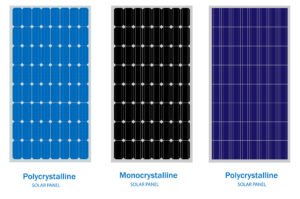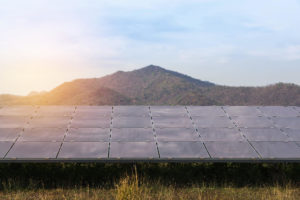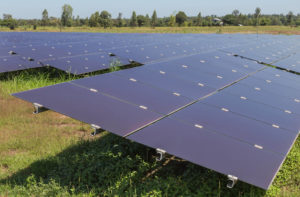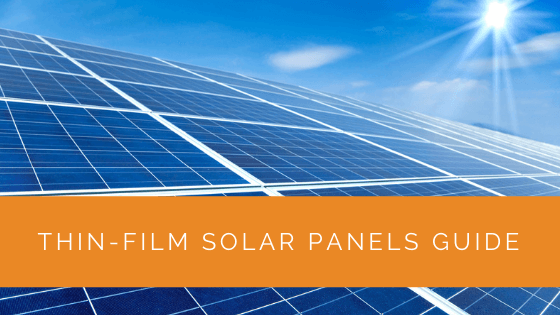Thin-film solar panels are a popular choice for sustainable power. They’re lightweight, flexible, and versatile. In this guide, we’ll explore their types, how they work, and their advantages and disadvantages. We’ll also discuss their manufacturing process, efficiency, and suitability for different environments. Join us to discover the possibilities of this cutting-edge solar technology.
Contents
- 1 Key Takeaways
- 2 Types Of Solar Panels
- 3 How Are Thin-Film Solar Cells Made?
- 4 Types Of Thin-Film Solar Panels
- 5 What Do Thin-Film Solar Panels Look Like?
- 6 Thin-Film Solar Panels Efficiency
- 7 How Does Temperature Affect Thin-Film Solar Panels?
- 8 Experience Solar Excellence with Us!
- 9 Finishing Notes
Key Takeaways
- Thin-film solar panels are a flexible and lightweight alternative to traditional crystalline panels, offering portability and versatility.
- They come in various types, including amorphous silicon, cadmium telluride, copper indium gallium selenide, and organic photovoltaic panels, each with its advantages and disadvantages.
- While thin-film panels have lower efficiency compared to crystalline ones, they are less affected by high temperatures and are ideal for specific applications, such as large commercial installations and areas with abundant sunlight.
Types Of Solar Panels
Solar panels can be classified into different categories based on the type of solar cells used, the solar technology, and the manufacturing process.
Broadly, there are three types of solar panels available today. Let us discuss the different crystalline panel types and flexible solar panels in detail.
Monocrystalline Solar Panels
 Monocrystalline solar panels are the oldest and most popular kind of rooftop solar panels in use today. A monocrystalline solar panel is made using about 40 solar cells.
Monocrystalline solar panels are the oldest and most popular kind of rooftop solar panels in use today. A monocrystalline solar panel is made using about 40 solar cells.
These monocrystalline cells are made from pure silicon via a process known as the Czochralski method. In this process, a silicon crystal is placed in molten silicon and pulled out slowly to enable the molten crystal to form a shell.
The ingot, or the shell, is then thinly sliced into silicon wafers. The wafers are turned into solar cells, which are then assembled to form monocrystalline panels.
Monocrystalline solar panels have the highest efficiency and performance of all the solar panel types, but they are also the most expensive panels.
Polycrystalline Solar Panels
Polycrystalline panels use newer technology compared to monocrystalline panels. Polycrystalline cells are made using fragments of silicon crystals melted together.
In the manufacturing process, the crystal is placed in molten silicon and allowed to fragment and cool. Once the formed crystal is cooled within the mold, the fragmented silicon gets thinly sliced into polycrystalline wafers. The wafers are then assembled to create polycrystalline panels.
Polycrystalline modules tend to have lower efficiency and performance compared to monocrystalline panels. However, they also have lower costs, making them a reasonable choice for anyone on a budget.
Thin-Film Solar Panels
Unlike their crystalline counterparts, thin-film panels are made from various substances. They are also known as flexible panels since their layers are then enough to be flexible.
While mono and polycrystalline panels come in standard sizes based on cell counts, a thin film panel can come in any size to suit your needs. Although they are less efficient than silicon solar panels, thin-film solar panels are used for their portability and flexibility.
Thin-film solar panels consist of flexible strips of materials that have cells that are 1/350th the size of cells in crystalline solar panels.
How Are Thin-Film Solar Cells Made?
Thin-film solar cells are the easiest and fastest solar cells you can manufacture. Although there are several kinds of thin-film solar panels, each solar panel type is created the same way.
Each thin-film solar panel consists of 3 main components:
- Photovoltaic (PV) Material: It is the main material and is responsible for converting sunlight into solar energy.
- Conductive Layer: A sheet of conductive material, like aluminum, prevents the loss of electricity and enhances conductivity.
- Protective Sheet: A thin layer of glass of plastic is placed on top of the solar power system to ensure its durability. Moreover, the high-quality sheet protects the solar panel system from the environment.
A thin-film solar panel is made with one or more very thin layers of PV materials laid on top of a substrate. The layers have multiple light-absorbing layers that are much smaller than traditional solar panels made with silicon.
Thin-film technology results in the lightest panels due to the solar cells’ size and the built-in semiconductors. They are often preferred for use in portable devices.
Types Of Thin-Film Solar Panels
If you’re looking to install solar panels, let us walk you through the different types of thin-film panels you can get your hands on.
Amorphous Silicon (a-Si) Solar Panels
Amorphous silicon panels are also made with silicon, like crystalline panels. However, the manufacturing process is pretty different.
These panels are created by depositing non-crystalline silicon, instead of solid silicon wafers, onto a substrate of metal, plastic, or glass.
Advantages Of Amorphous Silicon (a-Si) Solar Panels
- Minimal use of toxic substances
- Lesser silicon requirements
- Lower chances of cracking
- Flexible solar panels
Disadvantages Amorphous Silicon (a-Si) Solar Panels
- Almost half as efficient as monocrystalline panels or polycrystalline panels
Cadmium Telluride (CdTe) Solar Panels
 These panels are the most popular kind of thin layer panels used for power generation in modern solar projects.
These panels are the most popular kind of thin layer panels used for power generation in modern solar projects.
Tellurium is a very rare find, so it can be difficult to carry out mass production for these panels. First Solar is one of the leading manufacturers of CdTe panels.
Advantages Of Cadmium Telluride (CdTe) Solar Panels
- Can absorb sunlight via shorter wavelengths than traditional solar cells.
- Costs less to manufacture and install
- Higher efficiency than a-Si panels
Disadvantages Of Cadmium Telluride (CdTe) Solar Panels
- Cadmium is a very potent toxic heavy metal and causes pollution
- Cadmium telluride has toxic properties and needs to be disposed of carefully
- Lower efficiency than crystalline panels
Copper Indium Gallium Selenide (CIGS) Solar Panels
Cigs panels consist of cells made from copper gallium indium diselenide packed between layers of conductive material. Some of these panels use flexible backing, while the others enable full-panel flexibility.
The compound goes atop different kinds of layers, such as steel, glass, aluminum, or plastic.
Advantages Of Copper Indium Gallium Selenide (CIGS) Solar Panels
- High efficiency, with rating going even higher than 20% in lab tests
- Most environmentally-friendly thin-film panels
Disadvantages Of Copper Indium Gallium Selenide (CIGS) Solar Panels
- Contains the toxic chemical cadmium in low quantities
- Very expensive manufacturing process
Organic Photovoltaic (OPV) Solar Panels
OPV cells contain conductive organic polymers, or tiny organic molecules, to generate solar power.
In such a solar cell, multiple thin layers of organic vapor or solution are placed and contained within two electrodes in order to carry electrical current.
Advantages Of Organic Photovoltaic Solar Panels
- Available in a variety of colors and can be transparent too
- Most popular choice in the building-integrated PV market
- Made with easily available materials
- Low manufacturing costs and market prices
Disadvantages Of Organic Photovoltaic Solar Panels
- Operate at lower efficiency ratings
- Shorter lifespan than all other solar panels, including both traditional and thin-film kinds.
What Do Thin-Film Solar Panels Look Like?
As the name reveals, thin-film panels are much slimmer than crystalline silicon panels. Each layer is about one micron thick, which is even thinner than a strand of human hair.
Although every layer is a micron thick, the complete thin-film panel, with the addition of the frame, can be as thick as crystalline silicon panels. Moreover, thin-film panels are pretty lightweight and portable.
In terms of color, thin-film panels can have a solid black appearance or blue hues, depending on the material used in manufacturing.
Thin-Film Solar Panels Efficiency
 Thin-film solar panels are less efficient and have lower power output than most monocrystalline panels and polycrystalline solar panels.
Thin-film solar panels are less efficient and have lower power output than most monocrystalline panels and polycrystalline solar panels.
The exact efficiency rating of a thin-film solar panel system varies based on the type of photovoltaic material used in the cells. In general, the efficiency tends to be between 7% to 18%.
In theory, thin-film technology has a higher efficiency than silicon solar cells. As a result, many people believe that thin-film cells will prove more efficient in the future with technological advances. However, at present, monocrystalline panels boast a high efficiency.
How Does Temperature Affect Thin-Film Solar Panels?
Compared to crystalline silicon panels, thin-film panels boast a better temperature coefficient. It means that they are not significantly affected by high temperatures and will only lose a tiny part of their performance if it gets too hot.
Since there is plenty of direct sunlight and space in deserts, thin-film cells are an ideal choice to produce more solar energy. Moreover, they come protected with high-quality glass that remains robust despite the temperature.
Experience Solar Excellence with Us!
Trust in Solar Panels Network USA, where our seasoned experts deliver top-quality solar solutions for homes and businesses nationwide. With a legacy of countless successful installations and a commitment to sustainable energy, we’re your reliable partner in the solar journey. Ready for a brighter, eco-friendly future? Call us now at (855) 427-0058 and harness the power of the sun!
Finishing Notes
Thin-film solar panels are relatively new entrants to the market. Despite their lower efficiency range and performance, they have created a name for themselves.
These panels are best known for their portability and flexibility. Moreover, if you live in very hot or moist areas, this is the right solar panel type for you.
The installation cost of thin-film panels will depend upon your solar installer. However, there is no flat rate. The price of the solar panel system will depend upon the type of thin-film panel you pick.
Thin-film panels are not usually recommended for residential solar installations since they need larger areas.
If you’re planning to install solar panels in a commercial setting with enough space, thin-film panels are an excellent choice.
About the Author
Solar Panels Network USA stands at the forefront of solar energy solutions, driven by a team of seasoned solar engineers and energy consultants. With over decades of experience in delivering high-quality solar installations and maintenance, we are committed to promoting sustainable energy through customer-centric, tailored solutions. Our articles reflect this commitment, crafted collaboratively by experts to provide accurate, up-to-date insights into solar technology, ensuring our readers are well-informed and empowered in their solar energy decisions.

